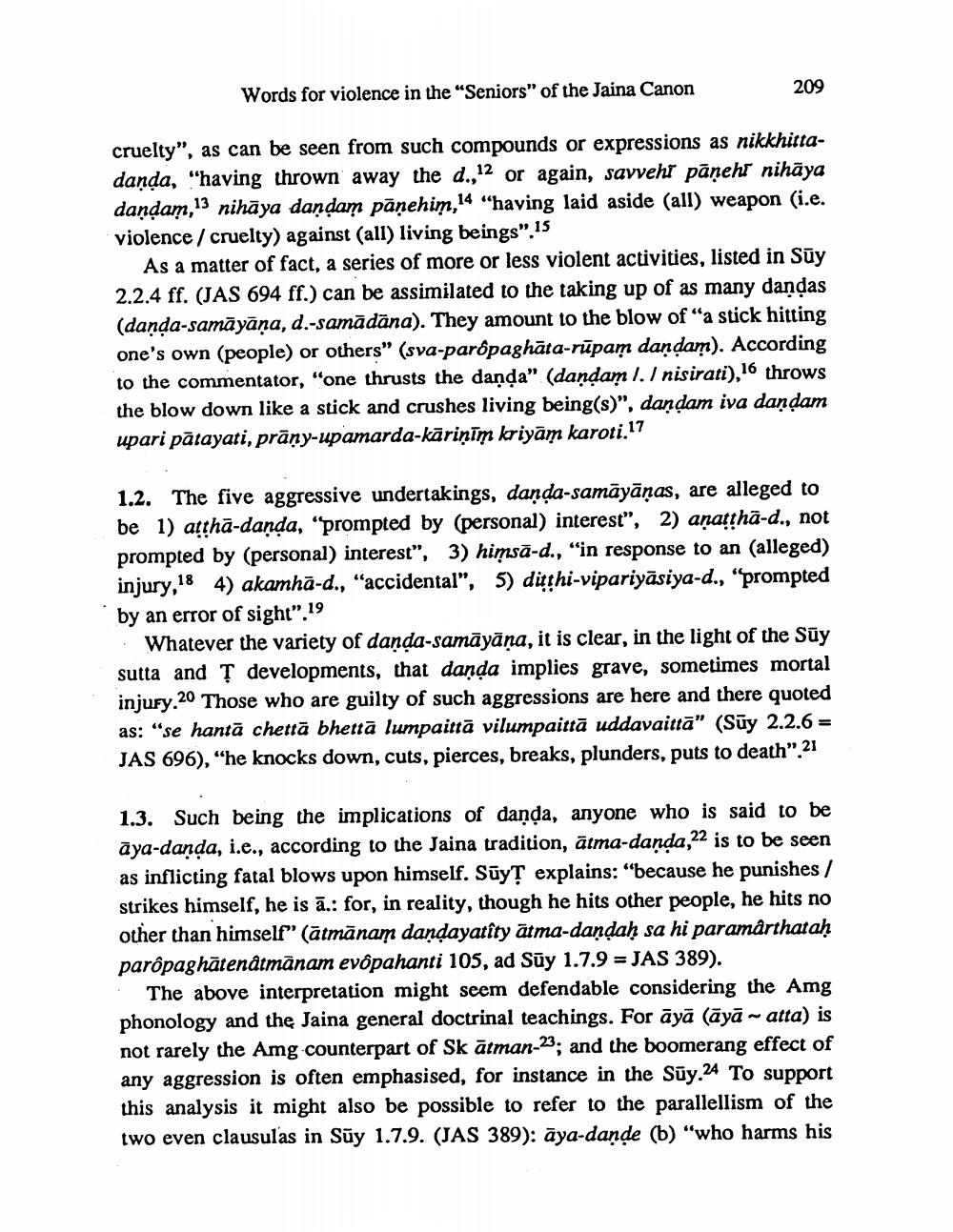________________
Words for violence in the “Seniors" of the Jaina Canon
209
cruelty", as can be seen from such compounds or expressions as nikkhittadanda, “having thrown away the d.,12 or again, savvehi pāņehr nihāya dandam,13 nihāya dandam pāņehim,14 “having laid aside (all) weapon (i.e. violence / cruelty) against (all) living beings". 15
As a matter of fact, a series of more or less violent activities, listed in Sūy 2.2.4 ff. (JAS 694 ff.) can be assimilated to the taking up of as many dandas (danda-samāyāna, d.-samādāna). They amount to the blow of “a stick hitting one's own (people) or others" (sva-paropaghāta-rūpam dandam). According to the commentator, "one thrusts the daņda” (dandam 1. I nisirati), 16 throws the blow down like a stick and crushes living being(s)", dandam iva dandam upari pātayati, prāny-upamarda-kärinim kriyām karoti.17
1.2. The five aggressive undertakings, danda-samāyānas, are alleged to be 1) atthā-danda, “prompted by (personal) interest", 2) anatthā-d., not prompted by (personal) interest", 3) himsā-d., "in response to an (alleged) injury, 18 4) akamhā-d., "accidental", 5) ditthi-vipariyāsiya-d., 'prompted by an error of sight". 19 • Whatever the variety of danda-samāyāna, it is clear, in the light of the Sūy sutta and Ț developments, that danda implies grave, sometimes mortal injury.20 Those who are guilty of such aggressions are here and there quoted as: "se hantā chettā bhettă lumpaittā vilumpaittā uddavaittā" (Sūy 2.2.6 = JAS 696), "he knocks down, cuts, pierces, breaks, plunders, puts to death". 21
1.3. Such being the implications of danda, anyone who is said to āya-danda, i.e., according to the Jaina tradition, ātma-danda,22 is to be seen as inflicting fatal blows upon himself. Sūy? explains: "because he punishes / strikes himself, he is ā.: for, in reality, though he hits other people, he hits no other than himself" (ātmānam dandayatîty ātma-dandaḥ sa hi paramarthataḥ parôpaghātenātmānam evôpahanti 105, ad Sūy 1.7.9 = JAS 389).
The above interpretation might seem defendable considering the Amg phonology and the Jaina general doctrinal teachings. For āyā (āyā - atta) is not rarely the Amg counterpart of Sk ātman-23; and the boomerang effect of any aggression is often emphasised, for instance in the Sūy.24 To support this analysis it might also be possible to refer to the parallellism of the two even clausulas in Sūy 1.7.9. (JAS 389): āya-dande (b) "who harms his




